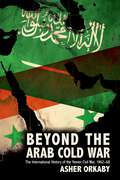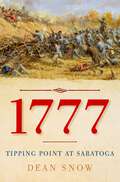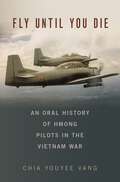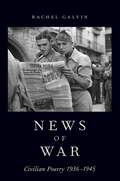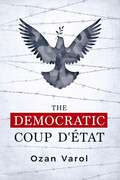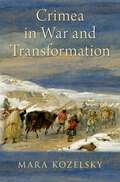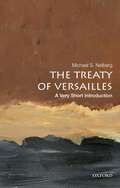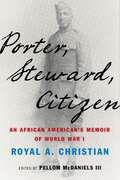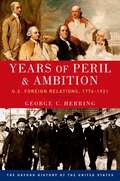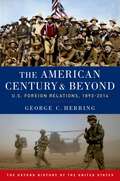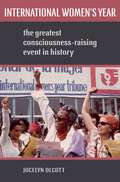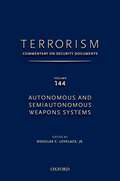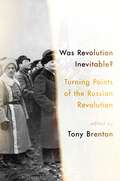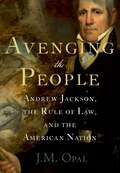- Table View
- List View
Beyond the Arab Cold War: The International History of the Yemen Civil War, 1962-68 (Oxford Studies in International History)
by Asher OrkabyBeyond the Arab Cold War brings the Yemen Civil War, 1962-68, to the forefront of modern Middle East History. During the 1960s, in the wake of a coup against Imam Muhammad al-Badr and the formation of the Yemen Arab Republic (YAR), Yemen was transformed into an arena of global conflict. Believing al-Badr to be dead, Egypt, the Soviet Union, and most countries recognized the YAR. But when al-Badr unexpectedly turned up alive, Saudi Arabia and Britain offered support to the deposed Imam, drawing Yemen into an internationally-sponsored civil war. Throughout six years of major conflict, Yemen sat at the crossroads of regional and international conflict as dozens of countries, international organizations, and individuals intervened in the local South Arabian civil war. Yemen was a showcase for a new era of UN and Red Cross peacekeeping, clandestine activity, Egyptian counterinsurgency, and one of the first largescale uses of poison gas since WWI. Events in Yemen were not dominated by a single power, nor were they sole products of US-Soviet or Saudi-Egyptian Arab Cold War rivalry. Britain, Canada, Israel, the UN, the US, and the USSR joined Egypt and Saudi Arabia in assuming varying roles in fighting, mediating, and supplying the belligerent forces. Despite Cold War tensions, Americans and Soviets appeared on the same side of the Yemeni conflict and acted mutually to confine Egyptian President Gamal Abdel Nasser to the borders of South Arabia. The end of the Yemen Civil War marked the end of both Nasser's Arab Nationalist colonial expansion and the British Empire in the Middle East, two of the most dominant regional forces. This internationalized conflict was a pivotal event in Middle East history, overseeing the formation of a modern Yemeni state, the fall of Egyptian and British regional influence, another Arab-Israeli war, Saudi dominance of the Arabian Peninsula, and shifting power alliances in the Middle East that continue to lie at the core of modern-day conflicts in South Arabia.
1777: Tipping Point at Saratoga
by Dean SnowIn the autumn of 1777, near Saratoga, New York, an inexperienced and improvised American army led by General Horatio Gates faced off against the highly trained British and German forces led by General John Burgoyne. The British strategy in confronting the Americans in upstate New York was to separate rebellious New England from the other colonies. Despite inferior organization and training, the Americans exploited access to fresh reinforcements of men and materiel, and ultimately handed the British a stunning defeat. The American victory, for the first time in the war, confirmed that independence from Great Britain was all but inevitable. Assimilating the archaeological remains from the battlefield along with the many letters, journals, and memoirs of the men and women in both camps, Dean Snow's 1777 provides a richly detailed narrative of the two battles fought at Saratoga over the course of thirty-three tense and bloody days. While the contrasting personalities of Gates and Burgoyne are well known, they are but two of the many actors who make up the larger drama of Saratoga. Snow highlights famous and obscure participants alike, from the brave but now notorious turncoat Benedict Arnold to Frederika von Riedesel, the wife of a British major general who later wrote an important eyewitness account of the battles. Snow, an archaeologist who excavated on the Saratoga battlefield, combines a vivid sense of time and place with details on weather, terrain, and technology and a keen understanding of the adversaries' motivations, challenges, and heroism into a suspenseful, novel-like account. A must-read for anyone with an interest in American history, 1777 is an intimate retelling of the campaign that tipped the balance in the American War of Independence.
1777: Tipping Point at Saratoga
by Dean SnowIn the autumn of 1777, near Saratoga, New York, an inexperienced and improvised American army led by General Horatio Gates faced off against the highly trained British and German forces led by General John Burgoyne. The British strategy in confronting the Americans in upstate New York was to separate rebellious New England from the other colonies. Despite inferior organization and training, the Americans exploited access to fresh reinforcements of men and materiel, and ultimately handed the British a stunning defeat. The American victory, for the first time in the war, confirmed that independence from Great Britain was all but inevitable. Assimilating the archaeological remains from the battlefield along with the many letters, journals, and memoirs of the men and women in both camps, Dean Snow's 1777 provides a richly detailed narrative of the two battles fought at Saratoga over the course of thirty-three tense and bloody days. While the contrasting personalities of Gates and Burgoyne are well known, they are but two of the many actors who make up the larger drama of Saratoga. Snow highlights famous and obscure participants alike, from the brave but now notorious turncoat Benedict Arnold to Frederika von Riedesel, the wife of a British major general who later wrote an important eyewitness account of the battles. Snow, an archaeologist who excavated on the Saratoga battlefield, combines a vivid sense of time and place with details on weather, terrain, and technology and a keen understanding of the adversaries' motivations, challenges, and heroism into a suspenseful, novel-like account. A must-read for anyone with an interest in American history, 1777 is an intimate retelling of the campaign that tipped the balance in the American War of Independence.
Great Strategic Rivalries: From The Classical World to the Cold War
by James LaceyFrom the legendary antagonism between Athens and Sparta during the Peloponnesian War to the Napoleonic Wars and the two World Wars of the twentieth century, the past is littered with long-term strategic rivalries. History tells us that such enduring rivalries can end in one of three ways: a series of exhausting conflicts in which one side eventually prevails, as in the case of the Punic Wars between ancient Rome and Carthage, a peaceful and hopefully orderly transition, like the rivalry between Great Britain and the United States at the turn of the twentieth century, or a one-sided collapse, such as the conclusion of the Cold War with the fall of the Soviet Union. However, in spite of a wealth of historical examples, the future of state rivalries remains a matter of conjecture. Great Strategic Rivalries explores the causes and implications of past strategic rivalries, revealing lessons for the current geopolitical landscape. Each chapter offers an accessible narrative of a historically significant rivalry, comprehensively covering the political, diplomatic, economic, and military dimensions of its history. Featuring original essays by world-class historians--including Barry Strauss, Geoffrey Parker, Williamson Murray, and Geoffrey Wawro--this collection provides an in-depth look at how interstate relations develop into often violent rivalries and how these are ultimately resolved. Much more than an engaging history, Great Strategic Rivalries contains valuable insight into current conflicts around the globe for policymakers and policy watchers alike.
Great Strategic Rivalries: From The Classical World to the Cold War
by James LaceyFrom the legendary antagonism between Athens and Sparta during the Peloponnesian War to the Napoleonic Wars and the two World Wars of the twentieth century, the past is littered with long-term strategic rivalries. History tells us that such enduring rivalries can end in one of three ways: a series of exhausting conflicts in which one side eventually prevails, as in the case of the Punic Wars between ancient Rome and Carthage, a peaceful and hopefully orderly transition, like the rivalry between Great Britain and the United States at the turn of the twentieth century, or a one-sided collapse, such as the conclusion of the Cold War with the fall of the Soviet Union. However, in spite of a wealth of historical examples, the future of state rivalries remains a matter of conjecture. Great Strategic Rivalries explores the causes and implications of past strategic rivalries, revealing lessons for the current geopolitical landscape. Each chapter offers an accessible narrative of a historically significant rivalry, comprehensively covering the political, diplomatic, economic, and military dimensions of its history. Featuring original essays by world-class historians--including Barry Strauss, Geoffrey Parker, Williamson Murray, and Geoffrey Wawro--this collection provides an in-depth look at how interstate relations develop into often violent rivalries and how these are ultimately resolved. Much more than an engaging history, Great Strategic Rivalries contains valuable insight into current conflicts around the globe for policymakers and policy watchers alike.
Fly Until You Die: An Oral History of Hmong Pilots in the Vietnam War (Oxford Oral History Series)
by Chia Youyee VangDuring the Vietnam War, the US Air Force secretly trained pilots from Laos, skirting Lao neutrality in order to bolster the Royal Lao Air Force and their own war efforts. Beginning in 1964, this covert project, "Water Pump," operated out of Udorn Airbase in Thailand with the support of the CIA. This Secret War required recruits from Vietnam-border region willing to take great risks--a demand that was met by the marginalized Hmong ethnic minority. Soon, dozens of Hmong men were training at Water Pump and providing air support to the US-sponsored clandestine army in Laos. Short and problematic training that resulted in varied skill levels, ground fire, dangerous topography, bad weather conditions, and poor aircraft quality, however, led to a nearly 50 percent casualty rate, and those pilots who survived mostly sought refuge in the United States after the war. Drawing from numerous oral history interviews, Fly Until You Die brings their stories to light for the first time--in the words of those who lived it.
Fly Until You Die: An Oral History of Hmong Pilots in the Vietnam War (Oxford Oral History Series)
by Chia Youyee VangDuring the Vietnam War, the US Air Force secretly trained pilots from Laos, skirting Lao neutrality in order to bolster the Royal Lao Air Force and their own war efforts. Beginning in 1964, this covert project, "Water Pump," operated out of Udorn Airbase in Thailand with the support of the CIA. This Secret War required recruits from Vietnam-border region willing to take great risks--a demand that was met by the marginalized Hmong ethnic minority. Soon, dozens of Hmong men were training at Water Pump and providing air support to the US-sponsored clandestine army in Laos. Short and problematic training that resulted in varied skill levels, ground fire, dangerous topography, bad weather conditions, and poor aircraft quality, however, led to a nearly 50 percent casualty rate, and those pilots who survived mostly sought refuge in the United States after the war. Drawing from numerous oral history interviews, Fly Until You Die brings their stories to light for the first time--in the words of those who lived it.
News of War: Civilian Poetry 1936-1945
by Rachel GalvinNews of War: Civilian Poetry 1936-1945 is a powerful account of how civilian poets confront the urgent problem of writing about war. The six poets Rachel Galvin discusses-W. H. Auden, Marianne Moore, Raymond Queneau, Gertrude Stein, Wallace Stevens, and César Vallejo-all wrote memorably about war, but still they felt they did not have authority to write about what they had not experienced firsthand. Consequently, these writers developed a wartime poetics engaging with both classical rhetoric and the daily news in texts that encourage readers to take critical distance from war culture. News of War is the first book to address the complex relationship between poetry and journalism. In two chapters on civilian literatures of the Spanish Civil War, five chapters on World War II, and an epilogue on contemporary poetry about the wars in Iraq and Afghanistan, Galvin combines analysis of poetic form with attention to socio-historical context, drawing on rare archival sources and furnishing new translations. In comparing how poets wrestled with the limits of bodily experience, and with the ethical, political, and aesthetic problems they faced, Galvin theorizes the concept of meta-rhetoric, a type of ethical self-interference. She argues that civilian writers employed strategies drawn from journalism precisely to question the objectivity and facticity of war reporting. Civilian poetics of the 1930s and 1940s was born from writers' desire to acknowledge their own socio-historical position and to write poems that responded ethically to the gravest events of their day.
The Democratic Coup d'État
by Ozan O. VarolThe term coup d'état--French for stroke of the state--brings to mind coups staged by power-hungry generals who overthrow the existing regime, not to democratize, but to concentrate power in their own hands as dictators. We assume all coups look the same, smell the same, and present the same threats to democracy. It's a powerful, concise, and self-reinforcing idea. It's also wrong. In The Democratic Coup d'État, Ozan Varol advances a simple, yet controversial, argument: Sometimes, a democracy is established through a military coup. Covering events from the Athenian Navy's stance in 411 B.C. against a tyrannical home government, to coups in the American colonies that ousted corrupt British governors, to twentieth-century coups that toppled dictators and established democracy in countries as diverse as Guinea-Bissau, Portugal, and Colombia, the book takes the reader on a gripping journey. Connecting the dots between these neglected events, Varol weaves a balanced narrative that challenges everything we thought we knew about military coups. In so doing, he tackles several baffling questions: How can an event as undemocratic as a military coup lead to democracy? Why would imposing generals-armed with tanks and guns and all-voluntarily surrender power to civilian politicians? What distinguishes militaries that help build democracies from those that destroy them? Varol's arguments made headlines across the globe in major media outlets and were cited critically in a public speech by Turkish President Recep Tayyip Erdogan. Written for a general audience, this book will entertain, challenge, and provoke, but more importantly, serve as a reminder of the imperative to question the standard narratives about our world and engage with all ideas, no matter how controversial.
The Democratic Coup d'État
by Ozan O. VarolThe term coup d'état--French for stroke of the state--brings to mind coups staged by power-hungry generals who overthrow the existing regime, not to democratize, but to concentrate power in their own hands as dictators. We assume all coups look the same, smell the same, and present the same threats to democracy. It's a powerful, concise, and self-reinforcing idea. It's also wrong. In The Democratic Coup d'État, Ozan Varol advances a simple, yet controversial, argument: Sometimes, a democracy is established through a military coup. Covering events from the Athenian Navy's stance in 411 B.C. against a tyrannical home government, to coups in the American colonies that ousted corrupt British governors, to twentieth-century coups that toppled dictators and established democracy in countries as diverse as Guinea-Bissau, Portugal, and Colombia, the book takes the reader on a gripping journey. Connecting the dots between these neglected events, Varol weaves a balanced narrative that challenges everything we thought we knew about military coups. In so doing, he tackles several baffling questions: How can an event as undemocratic as a military coup lead to democracy? Why would imposing generals-armed with tanks and guns and all-voluntarily surrender power to civilian politicians? What distinguishes militaries that help build democracies from those that destroy them? Varol's arguments made headlines across the globe in major media outlets and were cited critically in a public speech by Turkish President Recep Tayyip Erdogan. Written for a general audience, this book will entertain, challenge, and provoke, but more importantly, serve as a reminder of the imperative to question the standard narratives about our world and engage with all ideas, no matter how controversial.
Crimea in War and Transformation
by Mara KozelskyCrimea in War and Transformation is the first book to examine the terrible toll of violence on Crimean civilians and landscapes from mobilization through reconstruction. When war landed on Crimea's coast in September 1854, multiple armies instantly doubled the peninsula's population. Engineering brigades mowed down forests to build barracks. Ravenous men fell upon orchards like locusts and slaughtered Crimean livestock. Within a month, war had plunged the peninsula into a subsistence crisis. Soldiers and civilians starved as they waited for food to travel from the mainland by oxcart at a rate of ½ mile per hour. Every army conscripted Tatars as laborers, and fired upon civilian homes. Several cities and villages-Sevastopol, Kerch, Balaklava, Genichesk among them-burned to the ground. At the height of violence, hysterical officers accused Tatars of betrayal and deported large segments of the local population. Peace did not bring relief to Crimea's homeless and hungry. Removal of dead bodies and human waste took months. Epidemics swept away young children and the elderly. Russian officials estimated the devastation wrought by Crimean War exceeded that of Napoleon's invasion. Recovery packages failed human need, and by 1859, the trickle of Tatar out-migration that had begun during the war turned into a flood. Nearly 200,000 Tatars left Crimea by 1864, adding a demographic crisis to the tally of war's destruction. Drawing from a wide body of published and unpublished material, including untapped archives, testimonies, and secret police files from Russia, Ukraine and Crimea, Mara Kozelsky details in readable and vivid prose the toll of war on the Crimean people, and the Russian Empire as a whole, from mobilization through failed efforts at reconstruction.
Crimea in War and Transformation
by Mara KozelskyCrimea in War and Transformation is the first book to examine the terrible toll of violence on Crimean civilians and landscapes from mobilization through reconstruction. When war landed on Crimea's coast in September 1854, multiple armies instantly doubled the peninsula's population. Engineering brigades mowed down forests to build barracks. Ravenous men fell upon orchards like locusts and slaughtered Crimean livestock. Within a month, war had plunged the peninsula into a subsistence crisis. Soldiers and civilians starved as they waited for food to travel from the mainland by oxcart at a rate of ½ mile per hour. Every army conscripted Tatars as laborers, and fired upon civilian homes. Several cities and villages-Sevastopol, Kerch, Balaklava, Genichesk among them-burned to the ground. At the height of violence, hysterical officers accused Tatars of betrayal and deported large segments of the local population. Peace did not bring relief to Crimea's homeless and hungry. Removal of dead bodies and human waste took months. Epidemics swept away young children and the elderly. Russian officials estimated the devastation wrought by Crimean War exceeded that of Napoleon's invasion. Recovery packages failed human need, and by 1859, the trickle of Tatar out-migration that had begun during the war turned into a flood. Nearly 200,000 Tatars left Crimea by 1864, adding a demographic crisis to the tally of war's destruction. Drawing from a wide body of published and unpublished material, including untapped archives, testimonies, and secret police files from Russia, Ukraine and Crimea, Mara Kozelsky details in readable and vivid prose the toll of war on the Crimean people, and the Russian Empire as a whole, from mobilization through failed efforts at reconstruction.
The Treaty of Versailles: A Very Short Introduction (Very Short Introductions)
by Michael S. NeibergSigned on June 28, 1919 between Germany and the principal Allied powers, the Treaty of Versailles formally ended World War I. Problematic from the very beginning, even its contemporaries saw the treaty as a mediocre compromise, creating a precarious order in Europe and abroad and destined to fall short of ensuring lasting peace. At the time, observers read the treaty through competing lenses: a desire for peace after five years of disastrous war, demands for vengeance against Germany, the uncertain future of colonialism, and, most alarmingly, the emerging threat of Bolshevism. A century after its signing, we can look back at how those developments evolved through the twentieth century, evaluating the treaty and its consequences with unprecedented depth of perspective. The author of several award-winning books, Michael S. Neiberg provides a lucid and authoritative account of the Treaty of Versailles, explaining the enormous challenges facing those who tried to put the world back together after the global destruction of the World War I. Rather than assessing winners and losers, this compelling book analyzes the many subtle factors that influenced the treaty and the dominant, at times ambiguous role of the "Big Four" leaders: Woodrow Wilson of the United States, David Lloyd George of Great Britain, Vittorio Emanuele Orlando of Italy, and Georges Clémenceau of France. The Treaty of Versailles was not solely responsible for the catastrophic war that crippled Europe and the world just two decades later, but it played a critical role. As Neiberg reminds us, to understand decolonization, World War II, the Cold War, and even the complex world we inhabit today, there is no better place to begin than with World War I and the treaty that tried, and perhaps failed, to end it. ABOUT THE SERIES: The Very Short Introductions series from Oxford University Press contains hundreds of titles in almost every subject area. These pocket-sized books are the perfect way to get ahead in a new subject quickly. Our expert authors combine facts, analysis, perspective, new ideas, and enthusiasm to make interesting and challenging topics highly readable.
The Treaty of Versailles: A Very Short Introduction (Very Short Introductions)
by Michael S. NeibergSigned on June 28, 1919 between Germany and the principal Allied powers, the Treaty of Versailles formally ended World War I. Problematic from the very beginning, even its contemporaries saw the treaty as a mediocre compromise, creating a precarious order in Europe and abroad and destined to fall short of ensuring lasting peace. At the time, observers read the treaty through competing lenses: a desire for peace after five years of disastrous war, demands for vengeance against Germany, the uncertain future of colonialism, and, most alarmingly, the emerging threat of Bolshevism. A century after its signing, we can look back at how those developments evolved through the twentieth century, evaluating the treaty and its consequences with unprecedented depth of perspective. The author of several award-winning books, Michael S. Neiberg provides a lucid and authoritative account of the Treaty of Versailles, explaining the enormous challenges facing those who tried to put the world back together after the global destruction of the World War I. Rather than assessing winners and losers, this compelling book analyzes the many subtle factors that influenced the treaty and the dominant, at times ambiguous role of the "Big Four" leaders: Woodrow Wilson of the United States, David Lloyd George of Great Britain, Vittorio Emanuele Orlando of Italy, and Georges Clémenceau of France. The Treaty of Versailles was not solely responsible for the catastrophic war that crippled Europe and the world just two decades later, but it played a critical role. As Neiberg reminds us, to understand decolonization, World War II, the Cold War, and even the complex world we inhabit today, there is no better place to begin than with World War I and the treaty that tried, and perhaps failed, to end it. ABOUT THE SERIES: The Very Short Introductions series from Oxford University Press contains hundreds of titles in almost every subject area. These pocket-sized books are the perfect way to get ahead in a new subject quickly. Our expert authors combine facts, analysis, perspective, new ideas, and enthusiasm to make interesting and challenging topics highly readable.
Porter, Steward, Citizen: An African American's Memoir of World War I
by Royal A. ChristianIn 1917, the year the United States entered the Great War, Colonel Moorhead C. Kennedy, one of the most powerful men in the state of Pennsylvania and now the Deputy Director General of Transportation for the American Expeditionary Force, asked his African American valet if he would like to accompany him on an overseas mission. The valet's reaction was "Yes, sir." And he, as he recounted years later, "at once had visions of France." So began Royal Christian's odyssey in Europe. After a tumultuous crossing of the Atlantic as a third class steward on board a British steamship, he survived London's aerial bombing and then celebrated the end of the war in that city's streets. At last, he reached the long anticipated Paris, where he could admire the Eiffel Tower and the astonishing windows of Notre Dame. Royal Christian chronicled his extraordinary experiences in a memoir, Roy's Trip to the Battlefields of Europe, that was privately published in 1919. Rich in historical details, cultural observations, and political reflections, this book is a vital testimony to the history of African American men participating in World War I. After almost a century, Pellom McDaniels III has unearthed this gem, providing an elegantly annotated edition of Christian's memoir. Porter, Steward, Citizen nods both directly and indirectly to the challenges that African Americans encountered in their efforts to serve the cause of freedom and democracy, even as they were denied access to those rights by Jim Crow laws at home. Christian's unique story vividly illustrates how the war helped African American men claim a sense of manhood tied to their military service, and their efforts to transform themselves and their families into full-fledged American citizens. While race often served as a barrier in the army, this book suggests that some black men managed to take advantage of their outsider-within status and thrive: elevating not only themselves but also their community within a society that maintained a deep and abiding attachment to the myth of white supremacy.
Porter, Steward, Citizen: An African American's Memoir of World War I
by Royal A. ChristianIn 1917, the year the United States entered the Great War, Colonel Moorhead C. Kennedy, one of the most powerful men in the state of Pennsylvania and now the Deputy Director General of Transportation for the American Expeditionary Force, asked his African American valet if he would like to accompany him on an overseas mission. The valet's reaction was "Yes, sir." And he, as he recounted years later, "at once had visions of France." So began Royal Christian's odyssey in Europe. After a tumultuous crossing of the Atlantic as a third class steward on board a British steamship, he survived London's aerial bombing and then celebrated the end of the war in that city's streets. At last, he reached the long anticipated Paris, where he could admire the Eiffel Tower and the astonishing windows of Notre Dame. Royal Christian chronicled his extraordinary experiences in a memoir, Roy's Trip to the Battlefields of Europe, that was privately published in 1919. Rich in historical details, cultural observations, and political reflections, this book is a vital testimony to the history of African American men participating in World War I. After almost a century, Pellom McDaniels III has unearthed this gem, providing an elegantly annotated edition of Christian's memoir. Porter, Steward, Citizen nods both directly and indirectly to the challenges that African Americans encountered in their efforts to serve the cause of freedom and democracy, even as they were denied access to those rights by Jim Crow laws at home. Christian's unique story vividly illustrates how the war helped African American men claim a sense of manhood tied to their military service, and their efforts to transform themselves and their families into full-fledged American citizens. While race often served as a barrier in the army, this book suggests that some black men managed to take advantage of their outsider-within status and thrive: elevating not only themselves but also their community within a society that maintained a deep and abiding attachment to the myth of white supremacy.
Years of Peril and Ambition: U.S. Foreign Relations, 1776-1921 (Oxford History of the United States)
by George C. HerringPraised in the New York Times Book Review for its "Herculean power of synthesis," George C. Herring's 2008 From Colony to Superpower has won wide acclaim from critics and readers alike. Years of Peril and Ambition: U.S. Foreign Relations, 1776-1921 is the first volume of a new split paperback edition of that masterwork, making this award-winning title accessible to those with a particular interest in the first half of the United States' history. This first volume of Herring's international narrative charts the rise of the United States from a loose grouping of British colonies huddled along the Atlantic coast of North America into an emerging world power at the end of World War I. It tells an epic story of restless settlers pushing against weak restraints; of explorers, sea captains, adventurers, merchants, and missionaries carrying American ways to new lands. It analyzes countless crises, some resulting in war and others resolved peacefully. Above all, it is the tale of United States' expansion, commercial and political, across the North American continent, into the Caribbean and Pacific Ocean regions, and, economically, worldwide. Herring brings this first segment of America's dramatic emergence as a superpower to a close with the United States' post-World War I rise to the status of the world's most powerful nation, poised -- however unsteadily --for global engagement in what would be called the American Century. Years of Peril and Ambition highlights the ongoing impact of the nation's international affairs on the household names of U.S. history but also on ordinary citizens. Featuring a grand cast of characters, encompassing statesmen and presidents, diplomats and foreigners, and rogues and rascals alike, this fast-paced account illuminates the central importance of foreign relations to the existence and survival of the nation.
Years of Peril and Ambition: U.S. Foreign Relations, 1776-1921 (Oxford History of the United States)
by George C. HerringPraised in the New York Times Book Review for its "Herculean power of synthesis," George C. Herring's 2008 From Colony to Superpower has won wide acclaim from critics and readers alike. Years of Peril and Ambition: U.S. Foreign Relations, 1776-1921 is the first volume of a new split paperback edition of that masterwork, making this award-winning title accessible to those with a particular interest in the first half of the United States' history. This first volume of Herring's international narrative charts the rise of the United States from a loose grouping of British colonies huddled along the Atlantic coast of North America into an emerging world power at the end of World War I. It tells an epic story of restless settlers pushing against weak restraints; of explorers, sea captains, adventurers, merchants, and missionaries carrying American ways to new lands. It analyzes countless crises, some resulting in war and others resolved peacefully. Above all, it is the tale of United States' expansion, commercial and political, across the North American continent, into the Caribbean and Pacific Ocean regions, and, economically, worldwide. Herring brings this first segment of America's dramatic emergence as a superpower to a close with the United States' post-World War I rise to the status of the world's most powerful nation, poised -- however unsteadily --for global engagement in what would be called the American Century. Years of Peril and Ambition highlights the ongoing impact of the nation's international affairs on the household names of U.S. history but also on ordinary citizens. Featuring a grand cast of characters, encompassing statesmen and presidents, diplomats and foreigners, and rogues and rascals alike, this fast-paced account illuminates the central importance of foreign relations to the existence and survival of the nation.
The American Century and Beyond: U.S. Foreign Relations, 1893-2014 (Oxford History of the United States)
by George C. HerringIn his last years as president of the United States, an embattled George Washington yearned for a time when his nation would have "the strength of a Giant and there will be none who can make us afraid." At the turn of the twentieth century, the United States seemed poised to achieve a position of world power beyond what even Washington could have imagined. In The American Century and Beyond: U.S. Foreign Relations, 1893-2014, the second volume of a new split paperback edition of the award-winning From Colony to Superpower, George C. Herring recounts the rise of the United States from the dawn of what came to be known as the American Century. This fast-paced narrative tells a story of stunning successes and tragic failures, illuminating the central importance of foreign relations to the existence and survival of the nation. Herring shows how policymakers defined American interests broadly to include territorial expansion, access to growing markets, and the spread of the "American way of life." He recounts the United States' domination of the Caribbean and Pacific, its decisive involvement in two world wars, and the eventual victory in the half-century Cold War that left it, after the collapse of the Soviet Union, the world's lone superpower. But the unipolar moment turned out to be stunningly brief. Since the turn of the twenty-first century, conflicts in Afghanistan and Iraq and the emergence of nations such as Brazil, Russia, India, and China have left the United States in a position that is uncertain at best. A new chapter brings Herring's sweeping narrative up through the Global War on Terror to the present.
The American Century and Beyond: U.S. Foreign Relations, 1893-2014 (Oxford History of the United States)
by George C. HerringIn his last years as president of the United States, an embattled George Washington yearned for a time when his nation would have "the strength of a Giant and there will be none who can make us afraid." At the turn of the twentieth century, the United States seemed poised to achieve a position of world power beyond what even Washington could have imagined. In The American Century and Beyond: U.S. Foreign Relations, 1893-2014, the second volume of a new split paperback edition of the award-winning From Colony to Superpower, George C. Herring recounts the rise of the United States from the dawn of what came to be known as the American Century. This fast-paced narrative tells a story of stunning successes and tragic failures, illuminating the central importance of foreign relations to the existence and survival of the nation. Herring shows how policymakers defined American interests broadly to include territorial expansion, access to growing markets, and the spread of the "American way of life." He recounts the United States' domination of the Caribbean and Pacific, its decisive involvement in two world wars, and the eventual victory in the half-century Cold War that left it, after the collapse of the Soviet Union, the world's lone superpower. But the unipolar moment turned out to be stunningly brief. Since the turn of the twenty-first century, conflicts in Afghanistan and Iraq and the emergence of nations such as Brazil, Russia, India, and China have left the United States in a position that is uncertain at best. A new chapter brings Herring's sweeping narrative up through the Global War on Terror to the present.
International Women's Year: The Greatest Consciousness-Raising Event in History
by Jocelyn OlcottAmid the geopolitical and social turmoil of the 1970s, the United Nations declared 1975 as International Women's Year. The capstone event, a two-week conference in Mexico City, was dubbed by organizers and journalists as "the greatest consciousness-raising event in history." The event drew an all-star cast of characters, including Soviet cosmonaut Valentina Tereshkova, Iranian Princess Ashraf Pahlavi, and US feminist Betty Friedan, as well as a motley array of policymakers, activists, and journalists. International Women's Year, the first book to examine this critical moment in feminist history, starts by exploring how organizers juggled geopolitical rivalries and material constraints amid global political and economic instability. The story then dives into the action in Mexico City, including conflicts over issues ranging from abortion to Zionism. The United Nations provided indispensable infrastructure and support for this encounter, even as it came under fire for its own discriminatory practices. While participants expressed dismay at levels of discord and conflict, Jocelyn Olcott explores how these combative, unanticipated encounters generated the most enduring legacies, including women's networks across the global south, greater attention to the intersectionalities of marginalization, and the arrival of women's micro-credit on the development scene. This watershed moment in transnational feminism, colorfully narrated in International Women's Year, launched a new generation of activist networks that spanned continents, ideologies, and generations.
TERRORISM: Autonomous and Semiautonomous Weapons Systems (Terrorism:Commentary on Security Documen)
by Douglas LovelaceTerrorism: Commentary on Security Documents is a series that provides primary source documents and expert commentary on various topics relating to the worldwide effort to combat terrorism, as well as efforts by the United States and other nations to protect their national security interests. Volume 144, Autonomous and Semiautonomous Weapons Systems, examines the impact of robots and autonomous and semiautonomous weapons systems on the waging of modern warfare. It considers the likely effects of emerging technological innovations in this area from both a political and strategic standpoint, in addition to considering the implications of such technologies within the context of the law of armed conflict and international humanitarian law. This volume is divided into three sections: (1) U.S. policy and approaches to the use of autonomous and semiautonomous weapons systems; (2) U.S. armed forces use of such weapons systems; and (3) potential terrorist use of such weapons systems. Official policy documents from the DoD and the U.S. Army and Air Force are complemented by reports from the Strategic Studies Institute/Army War College Press and other U.S. military sources.
Was Revolution Inevitable?: Turning Points of the Russian Revolution
by Tony BrentonCommunism's rise and eventual fall in Eastern Europe is one of the great stories of the 20th century. Within this context, the Russian Revolution's role and legacy overshadows all else. In Was Revolution Inevitable?, former British Ambassador to Russia Sir Tony Brenton has gathered essays by leading historians to trace the events that led to the overthrow of the Tsarist regime and to pinpoint moments when those events could have unfolded in a drastically different way. What would the world be like had Fanny Kaplan succeeded in assassinating Vladimir Lenin in 1918? What if the Bolsheviks had never imposed the brutal "War Communism" initiatives that devastated the Russian peasants? What if Rasputin had talked Nicholas II out of involvement in World War One, which effectively led to the Revolution and sealed the demise of the Romanov dynasty? Preeminent scholars, including Orlando Figes, Richard Pipes, Douglas Smith, and Martin Sixsmith, ruminate on these questions and many others, assembling a series of pivotal moments that reveal what might have gone differently, and, if so, what the repercussions would have been. The contributors take a variety of approaches, from imagining an alternate history, to carefully studying a precarious moment of contingency, to disproving popular imagined alternatives. All of the chapters, however, shed light on Lenin's rise to power and the proliferation of his agenda, while assessing the influence of the revolution's pivotal moments on Russian-and global-politics. Provocative and illuminating, Was Revolution Inevitable? provides an in-depth exploration of the conflict that for nearly a century has shaped world history. The Russian Revolution put totalitarian communism into power, fueled Nazism and the Second World War, and forged one of the West's greatest antagonists. Here is a book that scrutinizes how the past, present, and future of global history could have been remarkably different had the events of 1917 unfolded differently and in the process deepens our understanding of what did happen and why.
Avenging the People: Andrew Jackson, the Rule of Law, and the American Nation
by J.M. OpalMost Americans know Andrew Jackson as a frontier rebel against political and diplomatic norms, a "populist" champion of ordinary people against the elitist legacy of the Founding Fathers. Many date the onset of American democracy to his 1829 inauguration. Despite his reverence for the "sovereign people," however, Jackson spent much of his career limiting that sovereignty, imposing new and often unpopular legal regimes over American lands and markets. He made his name as a lawyer, businessman, and official along the Carolina and Tennessee frontiers, at times ejecting white squatters from native lands and returning slaves to native planters in the name of federal authority and international law. On the other hand, he waged total war on the Cherokees and Creeks who terrorized western settlements and raged at the national statesmen who refused to "avenge the blood" of innocent colonists. During the long war in the south and west from 1811 to 1818 he brushed aside legal restraints on holy genocide and mass retaliation, presenting himself as the only man who would protect white families from hostile empires, "heathen" warriors, and rebellious slaves. He became a towering hero to those who saw the United States as uniquely lawful and victimized. And he used that legend to beat back a range of political, economic, and moral alternatives for the republican future. Drawing from new evidence about Jackson and the southern frontiers, Avenging the People boldly reinterprets the grim and principled man whose version of American nationhood continues to shape American democracy.
Avenging the People: Andrew Jackson, the Rule of Law, and the American Nation
by J.M. OpalMost Americans know Andrew Jackson as a frontier rebel against political and diplomatic norms, a "populist" champion of ordinary people against the elitist legacy of the Founding Fathers. Many date the onset of American democracy to his 1829 inauguration. Despite his reverence for the "sovereign people," however, Jackson spent much of his career limiting that sovereignty, imposing new and often unpopular legal regimes over American lands and markets. He made his name as a lawyer, businessman, and official along the Carolina and Tennessee frontiers, at times ejecting white squatters from native lands and returning slaves to native planters in the name of federal authority and international law. On the other hand, he waged total war on the Cherokees and Creeks who terrorized western settlements and raged at the national statesmen who refused to "avenge the blood" of innocent colonists. During the long war in the south and west from 1811 to 1818 he brushed aside legal restraints on holy genocide and mass retaliation, presenting himself as the only man who would protect white families from hostile empires, "heathen" warriors, and rebellious slaves. He became a towering hero to those who saw the United States as uniquely lawful and victimized. And he used that legend to beat back a range of political, economic, and moral alternatives for the republican future. Drawing from new evidence about Jackson and the southern frontiers, Avenging the People boldly reinterprets the grim and principled man whose version of American nationhood continues to shape American democracy.
